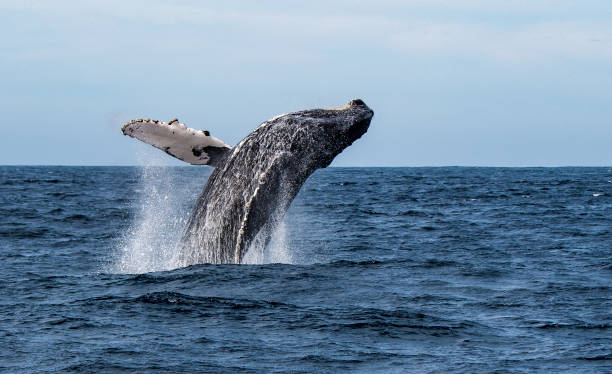
by Bill Schlesinger
The Atlantic Northern Right Whale is an endangered species, with (at last count) only 366 individuals left, including 70 females. They were gravely overfished during the era of intensive whaling. Now, many individuals have poor body condition due to changes in water temperature and chemical pollution. Population ecologists are particularly concerned whenever a species’ population drops below 500, for at that point there is a big danger of inbreeding and a loss of genetic diversity.
Happily. whale biologists have reported as many as 14 calf whales this spring, up significantly from recent years. But, a similar number of individuals often die each year, largely from ship strikes and entanglement in fishing nets.
The latter is particularly controversial in northern New England, where the lobster catch is an important contributor to the economy. It will not sit well with lobster fishermen if the fishery is closed to protect right whales. Nevertheless, a recent assessment by NOAA reported that 86% of the right whale population shows scars from entanglement, and necropsies in a recent 5-year period showed 58% of the deaths from entanglements. Lobster fishermen cannot argue that they have no effect on whales. At the same time, will we allow the Right Whale to go extinct so that lobstermen can make a living?
If we want to protect the whales and the lobster industry, compromise must be found. Some recent revisions to the rules for lobster fishing are likely to help, but not solve, the problem. These include reductions in the number of vertical lines that are used for traps, and the insertion of weak (or break) points in the lines to allow entangled whales to escape unharmed. Some “ropeless” methods are even under development. There is even some evidence that fewer lobster traps would produce a greater overall income for the industry. A more aggressive approach would be to limit the total number of traps allowed in areas that whales frequent.
Right Whales endure a number of human-induced stresses, including climate change, pollution, ship strikes and entanglement. The Canadian Whale Institute and other groups have been instrumental in disentangling whales that have gotten snagged by fishing ropes and in redirecting ship traffic to reduce collisions with whales. But, they can’t do it alone, and avoiding entanglements is a good first step to pursue. For Right Whales, the situation is dire, and extinction is the moral equivalent of murder (https://blogs.nicholas.duke.
Note
Rob Schick of the Duke University Marine Laboratory offered helpful suggestions to the preparation of this posting.
References
Christiansen, F. et al. 2020. Population comparison of right whale body condition reveals poor state of the North Atlantic right whale. Marine Ecology Progress Series 640: 1-16
Davies, K.T.A. et al. 2019. Variation in North Atlantic right whale Eubalaena glacialis occurrence in the Bay of Fundy, Canada, over three decades. Endangered Species Research 39: 159-171.
Harcourt, R., J. van der Hoop, S.D. Kraus, and E.L. Carroll. 2019. Future Directions in Eubalaena spp.: Comparative Research to Inform Conservation. Frontiers in Marine Science https://doi.org/10.3389/fmars.
Lasit, D.W. 2017. North Atlantic Right Whale. Johns Hopkins University Press
Myers, H.J. and M.J. Moore. 2020. Reducing effort in the US American lobster (Homarus americanus) fishery to prevent North Atlantic right whale (Eubalaena glacialis) entanglements may support higher profits and long-term sustainability. Marine Policy 118: doi: 10.1016/j.marpol.2020.104017
Pace, R.M., R. Williams, S. D. Kraus, A. Knowton, and H. Pettis. 2021. Cryptic mortality of North Atlantic Right Whales. Conservation Science and Practice https://doi.org/10.1111/csp2.
Sharp, S.M. et al. 2019. Gross and histopathologic diagnoses from North Atlantic right whale Eubalaena glacialis mortalities between 2003 and 2018. Diseases of Aquatic Organisms 135: 1-31.